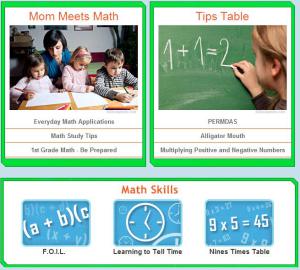Math Blaster gives all of you Blasters a fun way to learn your essential math skills. Now, the Math Blaster team is putting together a page just for you and your parents! On the “Cool Math” page at MathBlaster.com , you will find all types of resources that can enhance your Math Blaster learning experience.
With “Cool Math,” Blasters can find different articles and resources that can help you learn some of your basic math skills. Max and his Math Blaster team have created articles for skills such as the F.O.I.L. binomial multiplication method, the alligator mouth trick for greater than and lesser than signs, and even tutorials on how to tell time.
In addition to all of these lessons, tips and tricks, “Cool Math” also gives out funny and puzzling jokes, as well as 4 of the top “Hot Worksheets” that you can use to test out your math and science skills. Head on over to Cool Math right now so that you can take a look at all the resources it has to offer. Ask your parents to help explain some of the trickier concepts, and maybe they can even do the worksheets along with you to see who finishes first! Your parents can also find some resources for their use, including ways to help you learn in your school and home environment.
Make sure to go to Cool Math today and continue your learning adventure!
Filed under: Just for Fun, Learning Tips, Parents and Kids, Uncategorized, What's New | Tagged: Learning, MathBlaster.com, New Features, Parents and Kids | Leave a comment »








